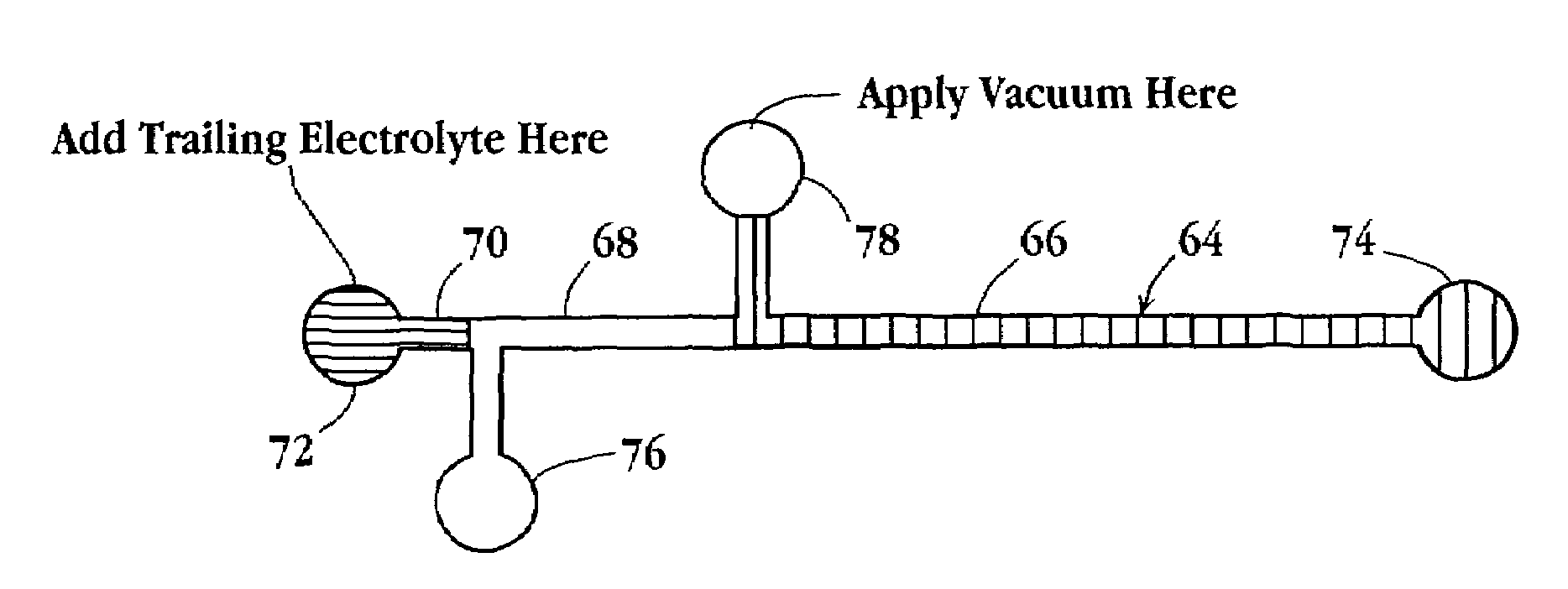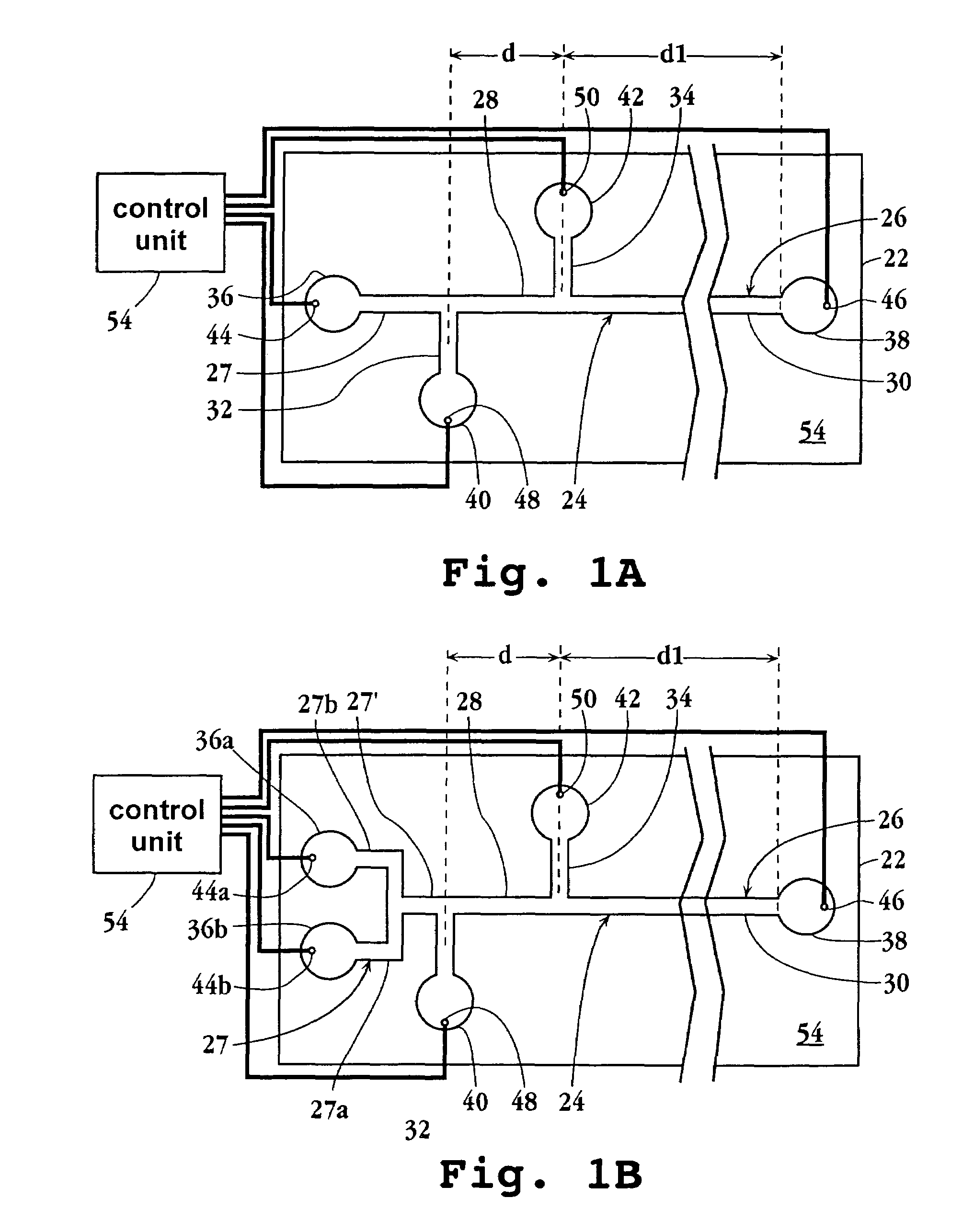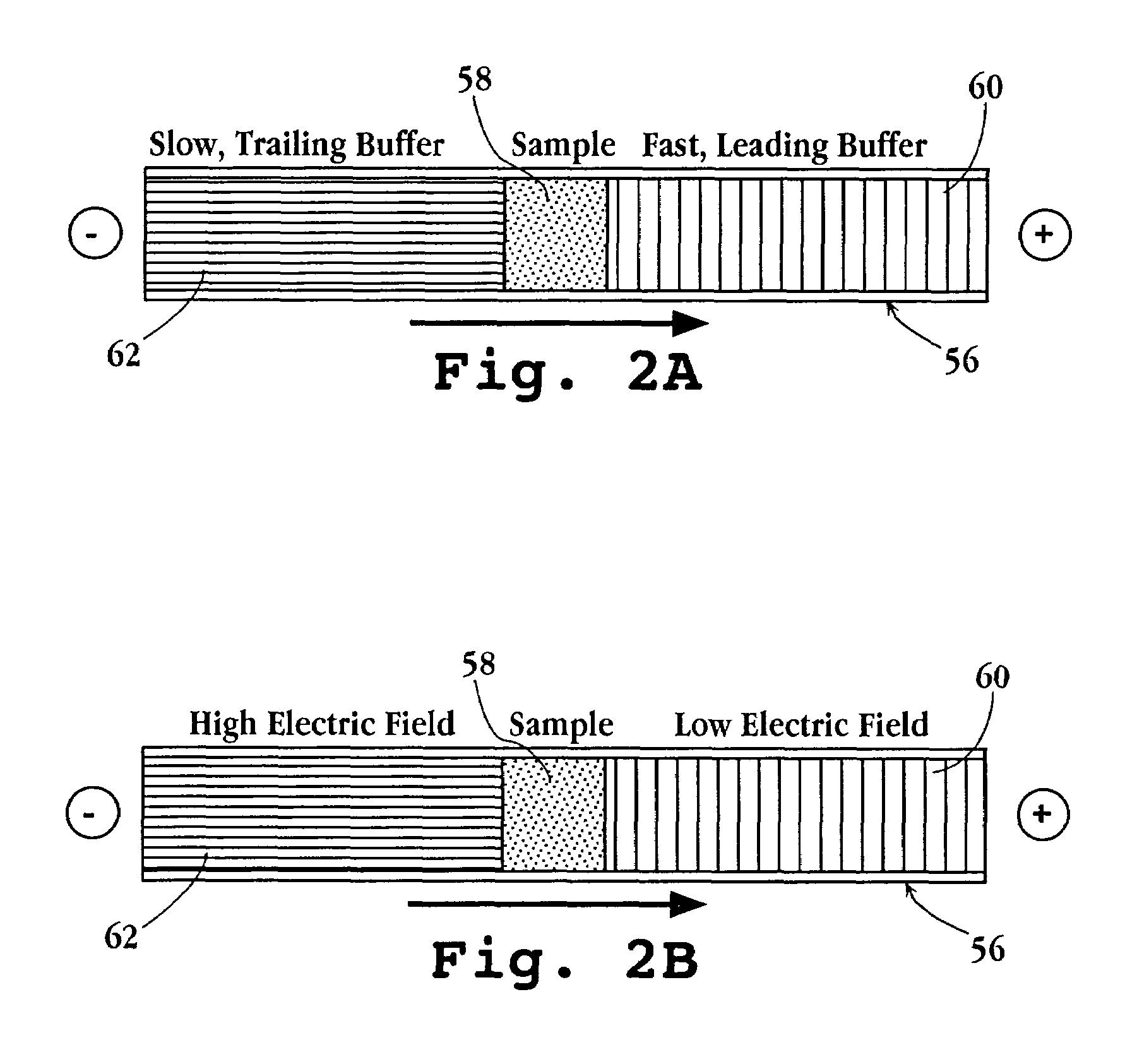Tandem isotachophoresis/zone electrophoresis method and system
a technology of isotachophoresis and electrophoresis, applied in the direction of fluid speed measurement, electrolysis, diaphragm, etc., can solve the problems of large sample volume and poor resolution of sample components
- Summary
- Abstract
- Description
- Claims
- Application Information
AI Technical Summary
Problems solved by technology
Method used
Image
Examples
Embodiment Construction
I. Microfluidic System
[0039]The invention includes, in one aspect, a microfluidic system for use in electrophoretic separation of components having a given negative or positive charge and contained in a dilute sample. By “sample” is meant an aqueous sample containing one or more charged components which can be separated electrophoretically, and preferably detected by standard optical techniques applicable to capillary zone electrophoresis. By “dilute sample” is meant a sample in which at least one of the components to be separated and detected is present at a concentration as low as 100 fM (femptomolar), typically 1 pM (picomolar) to higher concentrations, e.g., several hundred nanomolar of higher, preferably in the 1-500 pM range.
[0040]One exemplary system in accordance with the invention is shown at 22 in FIG. 1. The system includes a microfluidics device 24 having formed therein one or more channel networks, such as network 26 composed of a separation microchannel 26 having, in a...
PUM
| Property | Measurement | Unit |
|---|---|---|
| thickness | aaaaa | aaaaa |
| thickness | aaaaa | aaaaa |
| thickness | aaaaa | aaaaa |
Abstract
Description
Claims
Application Information
 Login to View More
Login to View More - R&D
- Intellectual Property
- Life Sciences
- Materials
- Tech Scout
- Unparalleled Data Quality
- Higher Quality Content
- 60% Fewer Hallucinations
Browse by: Latest US Patents, China's latest patents, Technical Efficacy Thesaurus, Application Domain, Technology Topic, Popular Technical Reports.
© 2025 PatSnap. All rights reserved.Legal|Privacy policy|Modern Slavery Act Transparency Statement|Sitemap|About US| Contact US: help@patsnap.com



